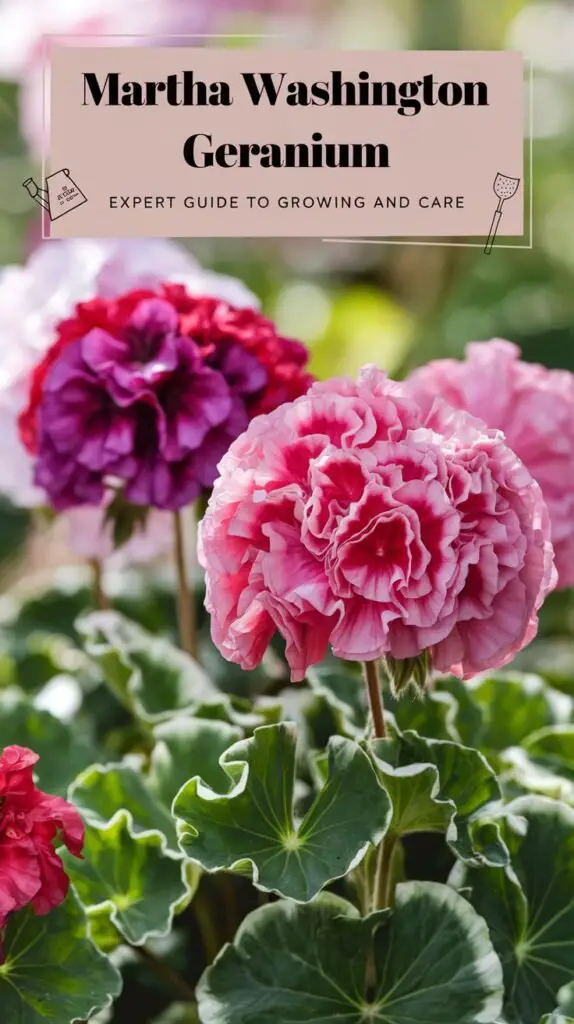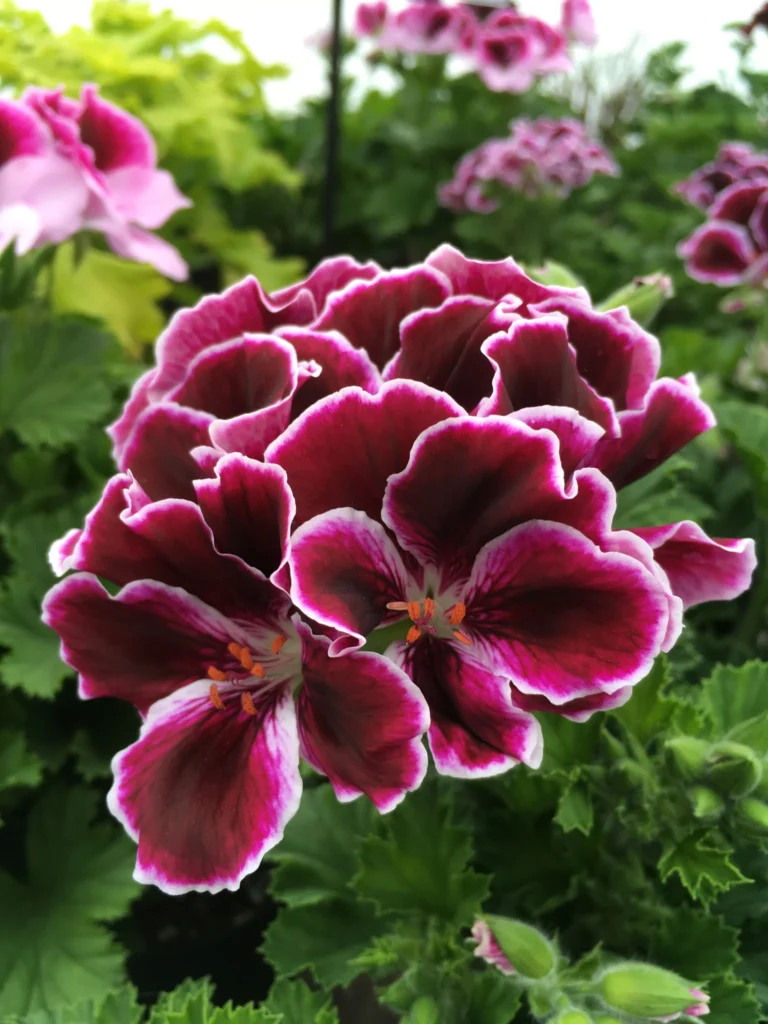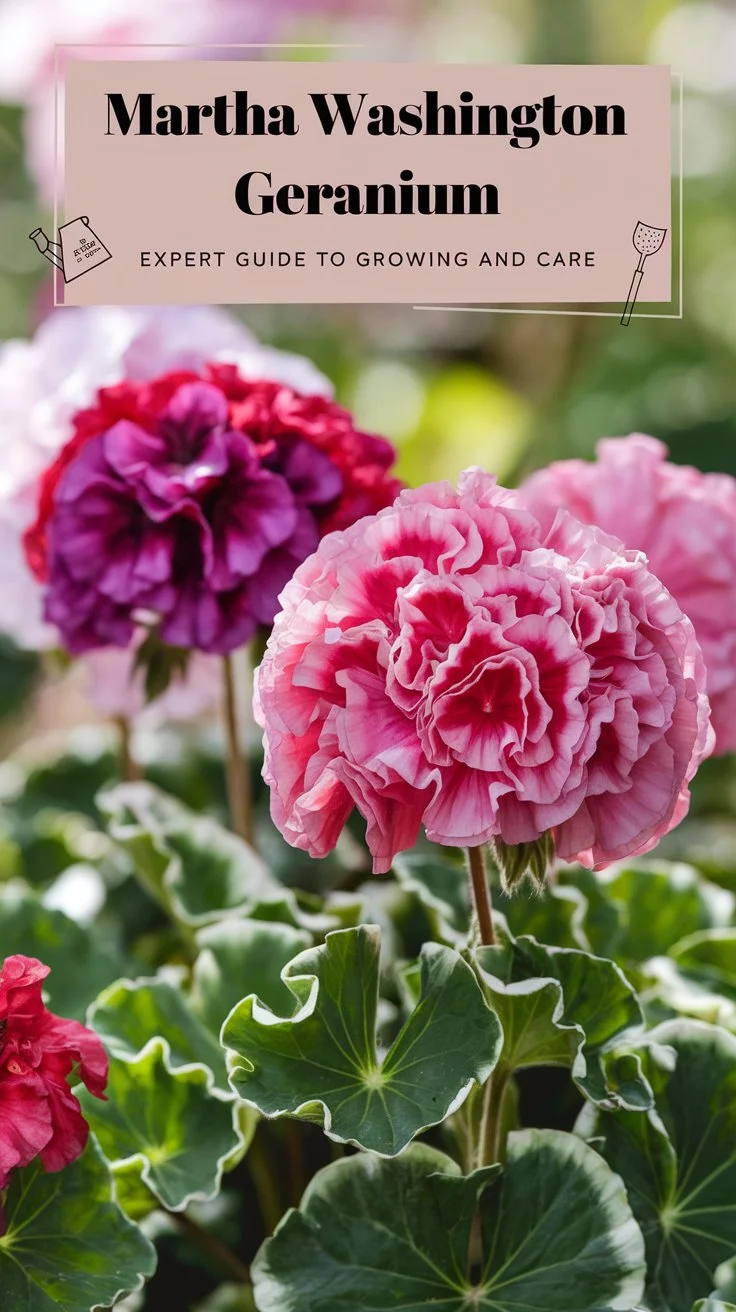Master Martha Washington Geranium care with our comprehensive 2024 guide. Learn expert tips on growing, maintenance, and troubleshooting for these stunning regal pelargoniums.
Martha Washington Geranium (Pelargonium x domesticum), also known as Regal Geraniums, are stunning ornamental plants known for their large, showy blooms and bi-colored petals. These sophisticated flowers thrive in cooler temperatures and offer an extended blooming season with proper care. As an elegant addition to any garden or indoor space, they require specific growing conditions to achieve their full potential.

Hello, I’m Ashley Scott, a professional horticulturist with over 15 years of experience in ornamental plant cultivation. Today, I’ll share my expertise on growing and caring for Martha Washington Geraniums, one of the most striking varieties in the pelargonium family.
Understanding Martha Washington Geraniums

These unique plants stand out from common geraniums due to their:
- Larger, more vibrant blooms
- Distinctive ruffled petals
- Cool-season flowering pattern
- Diverse color combinations
- More demanding care requirements
Optimal Growing Conditions
Temperature Requirements
Martha Washington Geraniums prefer:
- Daytime temperatures between 60-65°F (15-18°C)
- Nighttime temperatures around 50-55°F (10-13°C)
- Protection from extreme heat
- Cool greenhouse conditions for optimal blooming
Light Requirements
For the best flowering results:
- Bright, indirect sunlight
- Morning sun with afternoon shade
- Protection from harsh afternoon rays
- Proper light exposure for indoor plants
Seasonal Care Guide
Spring Care
- Begin fertilizing regularly
- Increase watering as growth resumes
- Monitor for new growth
- Start pruning as needed
Summer Maintenance
- Move to cooler locations
- Provide afternoon shade
- Increase humidity
- Continue deadheading spent blooms
Fall Preparation
- Reduce fertilization
- Decrease watering gradually
- Clean up dead foliage
- Prepare for winter protection
Winter Care
- Maintain cooler temperatures
- Reduce watering significantly
- Provide bright, indirect light
- Monitor for winter pests
Soil and Fertilization
Soil Requirements
The ideal soil mix should be:
- Well-draining
- Rich in organic matter
- pH balanced (6.0-6.5)
- Properly aerated
Fertilization Schedule
For optimal growth:
- Feed every 2 weeks during growing season
- Use balanced fertilizer (10-10-10)
- Reduce feeding during dormancy
- Avoid over-fertilization
Common Problems and Solutions
Pest Management
Watch for these common pests:
- Whiteflies
- Spider mites
- Aphids
- Fungus gnats
Disease Prevention
Common diseases include:
- Botrytis blight
- Root rot
- Leaf spot
- Bacterial blight
Propagation Techniques
Stem Cuttings
- Select healthy stems
- Cut 4-6 inches below leaf node
- Remove lower leaves
- Dip in rooting hormone
- Plant in sterile medium
Division
- Separate mature plants
- Ensure each division has roots
- Replant immediately
- Keep soil consistently moist
Decorative Uses
Indoor Display
- As centerpieces
- Window displays
- Hanging baskets
- Container arrangements
Outdoor Landscaping
- Border plantings
- Patio containers
- Mixed flower beds
- Formal gardens
Advanced Growing Tips
Pruning for Shape
- Remove spent blooms regularly
- Pinch back growing tips
- Shape during active growth
- Maintain desired size
Color Selection
Popular varieties include:
- Burgundy and white
- Pink and purple
- Lavender and fuschia
- Salmon and rose
Conclusion
Martha Washington Geraniums require specific care but reward gardeners with stunning blooms and sophisticated beauty. By following these expert guidelines and maintaining proper growing conditions, you can enjoy these elegant plants throughout their extended blooming season.
For more gardening tips and plant care guides, visit usagardenhub.com.





One comment on “Martha Washington Geranium: Expert Guide to Growing and Care”